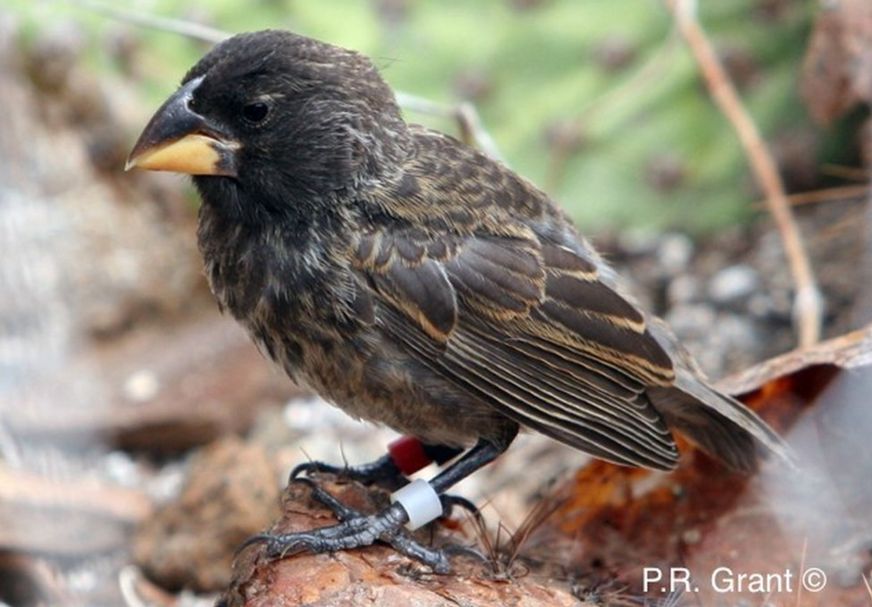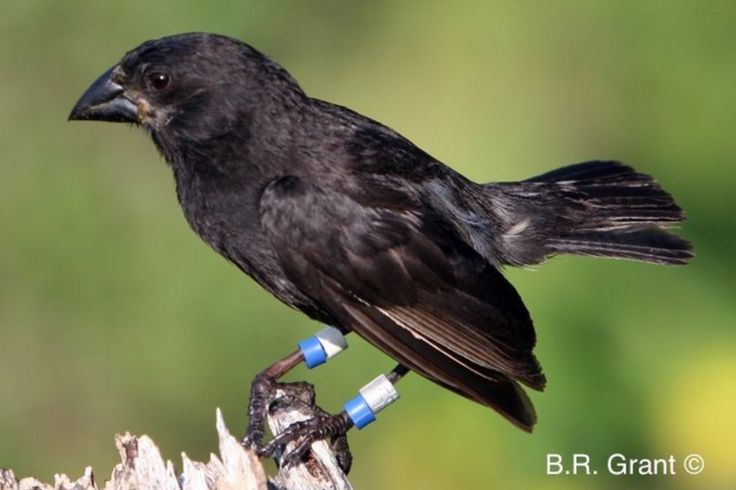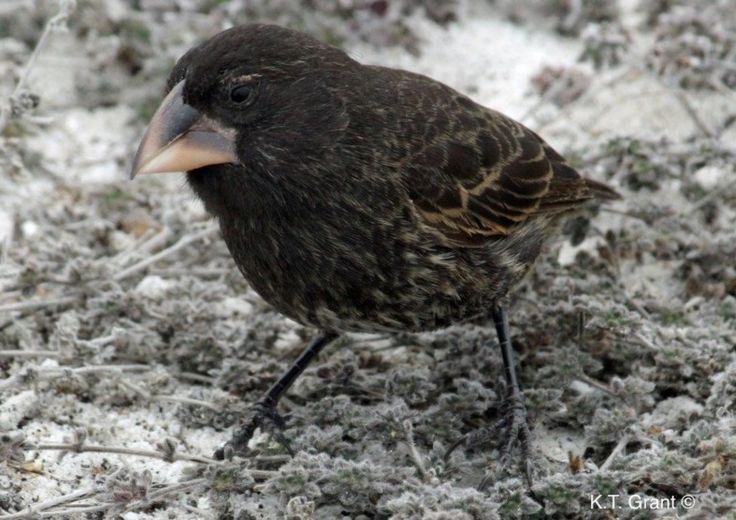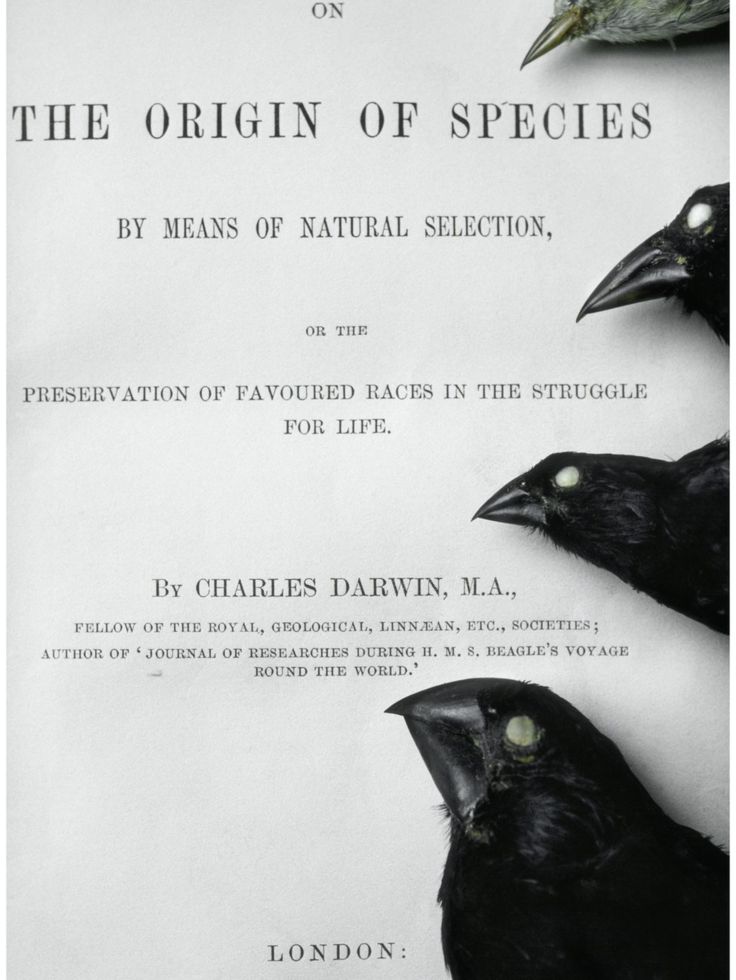
A population of finches on the Galapagos has been discovered in the process of becoming a new species.
This is the first example of speciation that scientists have been able to observe directly in the field.
Researchers followed the entire population of finches on a tiny Galapagos island called Daphne Major, for many years, and so they were able to watch the speciation in progress.
The research was published in the journal Science.
The group of finch species to which the Big Bird population belongs are collectively known as Darwin's finches and helped Charles Darwin to uncover the process of evolution by natural selection.
In 1981, the researchers noticed the arrival of a male of a non-native species, the large cactus finch.
Professors Rosemary and Peter Grant noticed that this male proceeded to mate with a female of one of the local species, a medium ground finch, producing fertile young.
Almost 40 years later, the progeny of that original mating are still being observed, and number around 30 individuals.
"It's an extreme case of something we're coming to realise more generally over the years. Evolution in general can happen very quickly," said Prof Roger Butlin, a speciation expert who wasn't involved in the study.
What makes a species?
This new finch population is sufficiently different in form and habits to the native birds, as to be marked out as a new species, and individuals from the different populations don't interbreed.
Prof Butlin told the BBC that people working on speciation credit the Grant professors with altering our understanding of rapid evolutionary change in the field.
In the past, it was thought that two different species must be unable to produce fertile offspring in order to be defined as such. But in more recent years, it has been established that many birds and other animals that we consider to be unique species are in fact able to interbreed with others to produce fertile young.
"We tend not to argue about what defines a species anymore, because that doesn't get you anywhere," said Prof Butlin. What he says is more interesting is understanding the role that hybridisation can have in the process of creating new species, which is why this observation of Galapagos finches is so important.
The researchers think that the original male must have flown 65 miles from the large cactus finches' home island of Española. That's a very long way for a small finch to fly, and so it would be very unlikely for the bird to make a successful return flight.


By identifying one way that new species can arise, and following the entire population, the researchers state this as an example of speciation occurring in a timescale we can observe.
In most cases, the offspring of cross-species matings are poorly adapted to their environment. But in this instance, the new finches on Daphne Major are larger than other species on the island, and have taken hold of new and unexploited food.
For this reason, the researchers are calling the animals the "Big Bird population".
To scientifically test whether the Big Bird population was genetically distinct from the three species of finch native to the island, Peter and Rosemary Grant collaborated with Prof Leif Andersson of Sweden's Uppsala University who analysed the population genetically for the new study.
Prof Andersson told BBC News: "The surprise was that we would expect the hybrid would start to breed with one of the other species on the island and be absorbed… we have confirmed that they are a closed breeding group."
Due to an inability to recognise the songs of the new males, native females won't pair with this new species.
 Image copyrightFRANS LANTING, MINT IMAGES / SCIENCE PHOTO LIBRARY
Image copyrightFRANS LANTING, MINT IMAGES / SCIENCE PHOTO LIBRARY
And in this paper, new genetic evidence shows that after two generations, there was complete reproductive isolation from the native birds. As a result, they are now reproductively - and genetically - isolated. So they have been breeding exclusively with each other over the years.
"What we are saying is that this group of birds behave as a distinct species. If you didn't know anything about [Daphne Major's] history and a taxonomist arrived on this island they would say there are four species on this island," said Prof Andersson.
There is no evidence that they will breed again with the native medium ground finch, but even if they did, they now have a larger size and can exploit new opportunities. Those advantageous traits may be maintained by natural selection.
So hybridisation can lead to speciation, simply through the addition of one individual to a population. It may therefore be a way for new traits to evolve quickly.
"If you just wait for mutations causing one change at a time, then it would make it more difficult to raise a new species that way. But hybridisation may be more effective than mutation," said Prof Butlin.